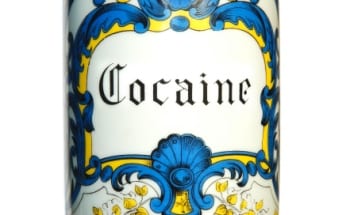
Cocaine use, and its attendant dangers, cut across all regional, age, ethnic and socioeconomic lines. A 2002 survey revealed that almost six million Americans 12 and older used cocaine during the preceding year, with more than one million compulsively taking the drug and meeting the criteria for being deemed “dependent”.
Several studies have suggested that genes play a part in determining how a person will react to cocaine. Identifying these genetic factors could help scientists understand why some people become dependent on the drug and might provide clues as how to best treat addiction. In a study published online this week in the Archives of General Psychiatry, researchers show that one piece of the genetic puzzle might be an unlikely candidate — a gene involved in quality control of proteins within cells.
“This finding…suggests that drug dependence and associated behaviors may involve biological pathways not typically associated with brain metabolism and opens a new pathway to understanding these highly prevalent disorders and their psychopathologic manifestations,” the author write.
Based on evidence from a previous study of substance abuse disorders that suggested that the MANEA gene plays a part in cocaine dependence, the researchers studied 11 genetic variations scattered throughout the gene in approximately 4,000 Americans of either European or African ancestry. The protein encoded by MANEA is involved in regulating how sugar molecules are attached to certain proteins, a process important for the proper function of many proteins.
Although the results varied somewhat between the study groups examined, and the evidence was stronger for a link between MANEA and cocaine-induced paranoia than it was for cocaine dependence in general, the researchers conclude that the gene is a good candidate for further research. The strongest association across all groups studied was between cocaine-induced paranoia and the SNP . Having the A version of this SNP increased odds of paranoia.
The authors say that additional studies, in both cocaine dependent people and perhaps in people with other disorders involving paranoia, will be necessary to determine whether the variations in the MANEA gene are specifically associated with cocaine-induced paranoia.
Even if variations in MANEA are confirmed to be associated with cocaine dependence and/or cocaine-induced paranoia, the question of why will still remain. The authors suggest that one possibility is that changes in the protein encoded by the MANEA gene could interfere with the sugar modifications on another protein, dopamine β-hydroxylase, which is involved in the conversion of dopamine to norepinephrine in the brain. The dopamine pathway is a key target of cocaine, and abnormally low levels of dopamine β-hydroxylase have been associated with psychotic symptoms in several psychiatric disorders, including cocaine dependence. Changes in the MANEA protein could also affect how cocaine is processed in the liver.



